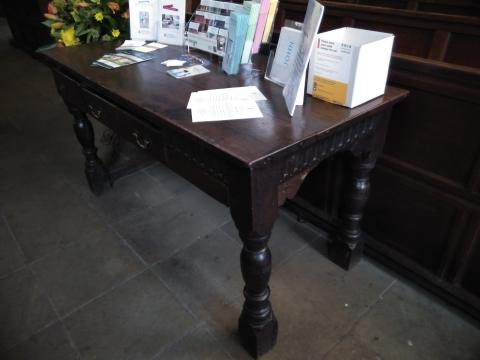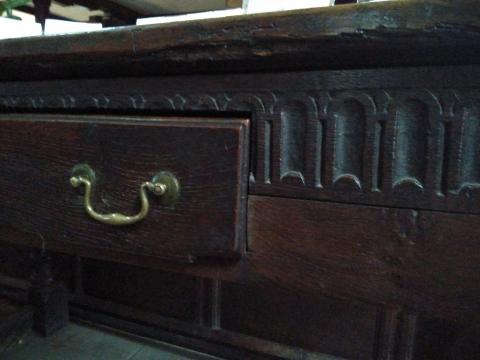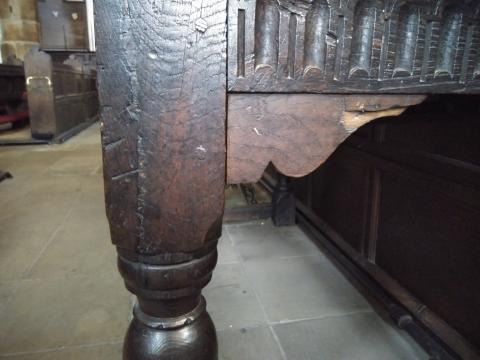Whalley's Old Communion Table

In old churches, one often finds a dark wooden table with thick legs. Such a one I found at Whalley, and was being helpfully used to display leaflets about the church as well as some Christian literature. Many of these tables date from the reign of King Edward VI, who ordered that the old Roman Catholic altars be broken up and that the communion bread and wine be served from a wooden table. Not only did this belie the previous Mass’ sacrificial status, but also the new tables were moved into the nave where the ordinary people worshipped. There, in their midst, the bread and wine could be distributed to all who would receive it. This is probably about as Protestant as Anglican communion services ever got. When poor Edward died aged 16, his bloody sister Mary re-Romanised, while his other sister, and her successor, Elizabeth, retained the restored altars, but combined them with reformed theology. A large number of parish churches therefore possessed a redundant but high-quality table of which no law then stipulated. Some sold them off, some may have been stolen or lost to fire, while others became useful in vestries for signing marriage registers. I suspect that Whalley’s leaflet table is such a one, a relic from the days of blessed King Edward.

Although Whalley's old table has drawers, the handles are eighteenth or nineteenth-century, and they were clearly added after the table’s construction, seeing as they somewhat spoil the grooved pattern under the table top. Those excessively thick legs are typical of the sixteenth and early seventeenth-centuries, and the battered surface and darkened colour certainly bespeak its age. I may be mistaken, of course; the church’s own guidebook makes no mention and it could just be an old table that was purchased for some other use. Yet I venture that it was once the focus of communion in that ancient parish; the place where a recently reformed church congregation were weened off their masses and pointed towards the Saviour Himself, via Huldrych Zwingli’s ‘memorial’ understanding of the elements. Such a view is now held by few in the state church, and this old lady, who likely once bore those memorials to Christ’s once-and-for-all sacrifice, is now a giant leaflet stand.

O Lord God, save Thy chosen people of England.
O Lord God, defend this realm from Papistry; and maintain Thy true religion, that I and my people may praise Thy holy Name for Thy Son Jesus Christ's sake.
-Edward VI's prayer on his deathbed, 6 July 1553.
- Log in to post comments


 Sunday Worship 10.45am & 6.00pm
Sunday Worship 10.45am & 6.00pm